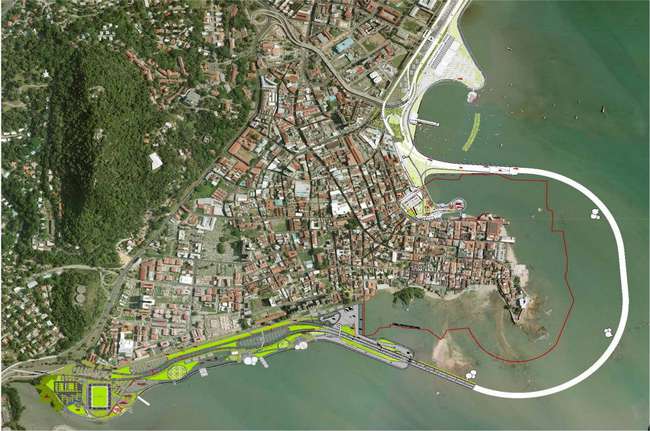
More than 300 years after it was settled, Casco Viejo, the oldest section of Panama City, is a picturesque, if sometimes slummy, neighborhood protected by UNESCO World Heritage status.
But the limits of that protection are unclear. Residents of Casco Viejo, including several American property owners, have been sounding the alarm about plans to build a road around the peninsula, which until now has culminated in a historic seawall. The road—three lanes in each direction—would link the center of Panama City to outlying suburbs by connecting sections of a highway, called the Cinta Costera, that already flank Casco Viejo.
To the government, the ring road, a viaduct several hundred feet offshore, is a way to solve a traffic nightmare without disturbing the historic neighborhood. Indeed, according to the government, the viaduct might give tourists a new reason to visit, since it will include “observatory platforms” from which to “contemplate” Casco Viejo. The road will also shorten the drive to Frank Gehry’s Museum of Biodiversity, which is scheduled to open next year on a site just west of the peninsula.
But opponents of the highway say that building a road around the tiny neighborhood will bring it, jarringly, into the 21st century—the equivalent of bridging the Grand Canyon or putting a roof over Machu Picchu. Edwina von Gal, a New York landscape designer who lives part-time in Panama, where she is involved in a number of conservation projects, is disturbed by the plan. “Why,” she asked, “is Panama determined to kill the things that make it special?”
K.C. Hardin, a former New York attorney who now owns several properties in the neighborhood, sees the road as a noose tightening around Casco Viejo's neck. Though the government says it has not yet started work on the viaduct itself, construction has reached the edge of the historic district, according to Hardin, who provided photographs. Last year, the government awarded a $776 million contract to Odebrecht, the Brazilian construction company, to build the Cinta Costera extension; the amount includes not only the viaduct, but also infrastructure improvements and recreational facilities at the edges of the district. According to a government spokesman, those facilities will promote “social inclusion of areas and communities that have been historically isolated and depressed.”
UNESCO’s position is unclear. Groups opposing the highway have written to the organization’s director-general, Irina Bokova, explaining that by the time UNESCO holds its next scheduled World Heritage meeting in 2013, the highway may be a fait accompli. UNESCO, which has called for further study of the issue, has no enforcement power but can revoke World Heritage status.



